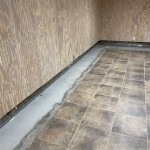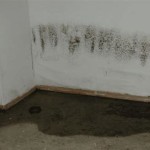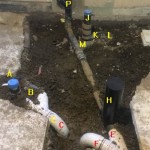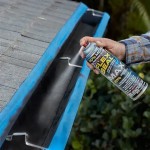Basement Bugs With Many Legs: Identification, Prevention, and Control
Basements, often dark, damp, and relatively undisturbed, provide ideal habitats for various arthropods. Among these, bugs with many legs, scientifically classified primarily within the classes Chilopoda (centipedes) and Diplopoda (millipedes), are common inhabitants. Correct identification is crucial for effective management, as the threats they pose and the control methods required vary significantly. Furthermore, understanding their biology and preferred environments allows for targeted prevention strategies.
This article provides an in-depth look at common basement bugs with many legs, focusing on identification, potential problems, preventative measures, and appropriate control techniques. Emphasis is placed on both chemical and non-chemical methods to ensure responsible and sustainable pest management.
Identifying Common Basement Bugs with Many Legs
The two most prevalent groups of multi-legged arthropods found in basements are centipedes and millipedes. While both are elongated and segmented, crucial differences exist that aid in their identification.
Centipedes (Class Chilopoda): These are predators characterized by having one pair of legs per body segment. This means that a centipede with 24 segments will have 24 pairs of legs. Their bodies are typically flattened and somewhat flexible, allowing them to navigate tight spaces. Perhaps the most distinguishing feature is a pair of venomous claws (forcipules) located just behind their head, which they use to capture and subdue prey. Common basement centipedes include the house centipede (Scutigera coleoptrata), which is yellowish-brown with dark stripes and exceptionally long legs, making it appear quite quick and unsettling.
Millipedes (Class Diplopoda): Millipedes, on the other hand, have two pairs of legs per body segment, giving them a more cylindrical and robust appearance. They are generally slower-moving than centipedes and are primarily detritivores, feeding on decaying organic matter. They lack venomous claws and are not capable of biting humans. When disturbed, many millipede species curl up into a tight coil for protection. Their color can range from brown and black to reddish-brown. While not typically considered indoor pests, large numbers of millipedes can sometimes invade basements, particularly after periods of heavy rain or leaf litter accumulation near the foundation.
Beyond centipedes and millipedes, other less common arthropods with numerous legs, such as sowbugs and pillbugs (both crustaceans, belonging to the order Isopoda), may also be found in basements. These creatures are easily identified by their armored, segmented bodies and their preference for damp environments. Pillbugs can roll themselves into a ball when threatened, earning them their common name.
Potential Problems Associated with Basement Bugs with Many Legs
The presence of multi-legged bugs in the basement can raise concerns, although the actual threats they pose often vary.
Centipedes and Bites: While centipedes are venomous and capable of biting humans, such incidents are rare. The house centipede, the most common basement species, possesses relatively small mandibles, and its bite is usually no more painful than a bee sting. Centipede bites are not medically significant for most individuals, but those with allergies may experience a more pronounced reaction. The primary concern with centipedes is their unsettling appearance, which can be emotionally distressing for some people.
Millipedes and Odor/Allergies: Millipedes do not bite or sting, but some species can secrete defensive fluids that may irritate the skin or eyes. These secretions can also produce a foul odor. In rare cases, some individuals may experience allergic reactions to these secretions. The main problem with millipedes, however, is their potential for mass invasions. Large numbers of millipedes congregating in a basement can be a nuisance, requiring significant cleanup efforts. Furthermore, dead millipedes can contribute to unpleasant odors.
Damage to Property: While neither centipedes nor millipedes directly damage structures, their presence can indicate underlying moisture problems. Both groups thrive in damp environments, so their presence suggests high humidity levels or water leaks in the basement. These conditions can, in turn, promote the growth of mold and mildew, which can damage building materials and pose health risks to occupants. Sowbugs and pillbugs, similarly, can indicate excessive moisture.
Psychological Distress: The simple presence of many-legged creatures can be alarming for many people. Concerns about hygiene, bites, and general unease can create considerable stress and affect the comfort and usability of the basement space.
Prevention and Control Strategies for Basement Bugs
Effective management of basement bugs with many legs involves a multi-pronged approach that addresses both the underlying causes of infestation and the immediate control of existing populations. Prevention is always the preferred strategy, as it minimizes the need for chemical interventions.
Moisture Control: Reducing moisture is paramount in preventing infestations of centipedes, millipedes, and other moisture-loving arthropods. This involves:
- Repairing Leaks: Address any plumbing leaks, roof leaks, or foundation cracks that allow water to enter the basement.
- Improving Ventilation: Ensure adequate ventilation to reduce humidity levels. Consider using a dehumidifier, especially in damp climates.
- Proper Drainage: Grade the soil around the foundation to slope away from the building, and ensure that gutters and downspouts are functioning correctly to divert water away from the basement.
- Removing Standing Water: Eliminate any sources of standing water in the basement, such as leaky pipes or condensation.
Habitat Modification: Removing potential hiding places and food sources can significantly reduce bug populations. This includes:
- Clearing Debris: Remove piles of leaves, firewood, and other organic debris from around the foundation. These materials provide shelter and food for many arthropods.
- Controlling Vegetation: Keep vegetation trimmed back from the foundation to reduce humidity and provide sunlight penetration.
- Sealing Cracks and Openings: Seal cracks and gaps in the foundation, around windows and doors, and where pipes enter the basement to prevent entry.
- Proper Storage: Store items off the floor and away from walls to improve ventilation and reduce hiding places. Use airtight containers to store food and other items that might attract pests.
Non-Chemical Control Methods: These methods are environmentally friendly and often effective for controlling small infestations. Examples include:
- Manual Removal: Vacuuming or sweeping up bugs is a simple and effective method.
- Traps: Sticky traps placed along walls and in corners can capture centipedes and millipedes.
- Diatomaceous Earth: This natural powder is made from fossilized algae and is effective for dehydrating arthropods. It can be applied to cracks and crevices where bugs are likely to travel. Use food-grade diatomaceous earth, and be sure to wear a mask during application to avoid inhaling the dust.
Chemical Control Methods: Chemical treatments should be used as a last resort, and only after other preventative measures have been taken. When using pesticides, it is crucial to follow label instructions carefully and to choose products that are specifically designed for the target pests. Consider the following options:
- Perimeter Treatments: Applying a residual insecticide around the perimeter of the building can create a barrier that prevents bugs from entering.
- Crack and Crevice Treatments: Injecting insecticide into cracks and crevices can kill bugs that are hiding inside.
- Dusts: Insecticidal dusts, such as those containing boric acid, can be applied to voids and other inaccessible areas.
When using pesticides, it is important to consider the potential risks to children, pets, and the environment. Choose products with low toxicity and apply them carefully to minimize exposure. Consider hiring a licensed pest control professional for effective and safe application of chemical treatments, especially for large or persistent infestations. A professional can also identify the specific species present and recommend the most appropriate control strategies.
Effective basement bug management relies on consistently addressing moisture issues, maintaining a clean environment, and employing targeted control strategies. By combining preventative measures with appropriate control techniques, homeowners can minimize the presence of these unwanted guests and maintain a comfortable and healthy living space.

Too Many Legs To Count What You Need Know About Centipedes Environmental Pest Management

House Centipede Yard And Garden

2 Many Legged Nuisance Pests That Can Be Harmful Done Right Pest Solutions

Meet The House Centipede Colonial Pest Control

House Centipedes Bug Out Pest Control And Extermination Services

House Centipedes

Centipede Exterminator

Centipedes Ohioline

Why House Centipedes Are Good For Your Home My Garden And Greenhouse

A Guide To Centipedes Silverfish Earwigs More In Wa Prosite







